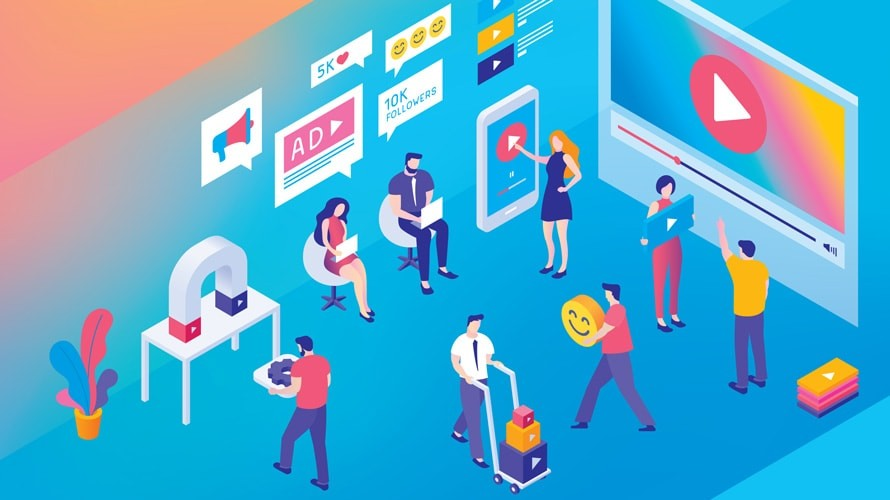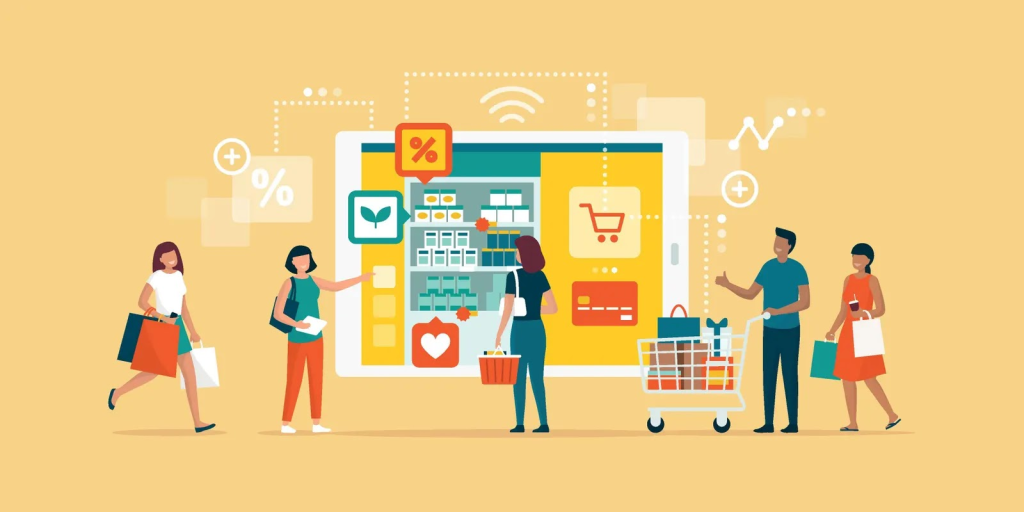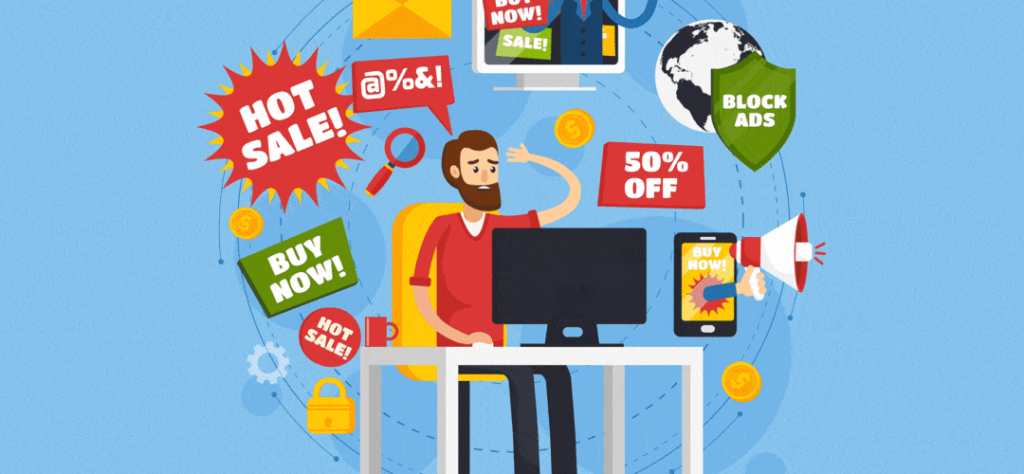In the digital age, modern consumer behavior has undergone significant changes, and these shifts are having a profound impact on the e-commerce industry. E-commerce platforms are constantly adapting to meet the evolving needs and preferences of consumers. Here’s how modern consumer behavior is revolutionizing e-commerce.

I. Changing Shopping Preferences
A. Mobile Shopping Dominance
- Convenience at Fingertips
Modern consumers are increasingly relying on mobile devices for shopping. Smartphones and tablets offer the convenience of shopping anytime, anywhere. For example, during a commute or while waiting in line, consumers can easily browse and purchase products. E-commerce apps have made the shopping process seamless, with features like one-click ordering and saved payment information. - Mobile-Optimized Experiences
E-commerce businesses are now focusing on creating mobile-optimized websites and apps. They ensure that the user interface is intuitive and the loading speed is fast on mobile devices. A clothing retailer, for instance, might design its app with large, easy-to-tap buttons and a simplified checkout process to enhance the mobile shopping experience.
B. Personalization Expectations
- Tailored Product Recommendations
Consumers today expect personalized product recommendations. E-commerce platforms use data analytics to understand consumers’ browsing and purchase history. Based on this, they can suggest products that match individual interests. An online bookstore might recommend new releases in a consumer’s favorite genre, increasing the likelihood of a purchase. - Customized Marketing Messages
In addition to product recommendations, consumers also respond well to customized marketing messages. E-commerce companies send personalized emails and push notifications, addressing consumers by name and offering deals relevant to their past purchases. A beauty e-commerce site might send a special offer for a new skincare product to a consumer who has previously bought similar items.
II. The Rise of Social Media Influence
A. Social Commerce Growth
- Shopping on Social Platforms
Social media platforms have become new shopping destinations. Consumers are now more likely to discover and purchase products directly on platforms like Instagram, TikTok, and Facebook. For example, Instagram’s shoppable posts allow users to click on a product in a photo and be redirected to the e-commerce store for purchase. - Influencer Marketing Impact
Influencer marketing has a significant impact on modern consumer behavior. Influencers on social media can persuade their followers to buy products. A fitness influencer, for instance, might promote a particular brand of workout gear, and their followers may be inclined to make a purchase based on the recommendation.
B. User-Generated Content (UGC)
- Trust in UGC
Consumers trust user-generated content more than traditional advertising. Reviews, testimonials, and photos shared by other consumers on social media and e-commerce platforms play a crucial role in the purchase decision-making process. For example, a consumer looking to buy a new camera might read reviews and watch unboxing videos made by other users before making a choice. - Influence on Brand Perception
Positive UGC can enhance a brand’s reputation, while negative UGC can have the opposite effect. E-commerce businesses are now actively encouraging consumers to share their experiences. A travel e-commerce company might offer incentives for customers to write reviews and share photos of their trips, which can attract more potential customers.

III. Sustainability and Ethical Concerns
A. Demand for Sustainable Products
- Environmentally Conscious Shopping
Modern consumers are more environmentally conscious and are demanding sustainable products. They prefer to buy from brands that use eco-friendly materials and production methods. An e-commerce store selling clothing might see an increase in demand for its organic cotton and recycled fabric collections. - Sustainable Packaging
In addition to the products themselves, consumers also care about the packaging. E-commerce companies are responding by using sustainable packaging materials, such as recycled cardboard and biodegradable plastics. A food e-commerce business might use compostable packaging for its products to meet consumer expectations.
B. Ethical Sourcing and Labor Practices
- Support for Ethical Brands
Consumers are becoming more aware of ethical sourcing and labor practices. They are more likely to support brands that ensure fair wages and good working conditions for their employees. An e-commerce platform that promotes brands with ethical practices can attract a growing segment of consumers. - Transparency in Supply Chain
There is a demand for transparency in the supply chain. Consumers want to know where the products are sourced and how they are made. E-commerce businesses are starting to provide more information about their supply chain on their websites to build trust with consumers.
IV. Changing Purchase Decision Process
A. Research and Comparison
- Extensive Online Research
Before making a purchase, modern consumers conduct extensive online research. They compare prices, read reviews, and look for the best deals. For example, when buying a new laptop, a consumer might visit multiple e-commerce websites, read product reviews on tech blogs, and compare prices on price comparison sites. - Multiple Touchpoints
The purchase decision process now involves multiple touchpoints. Consumers might start by seeing a product on social media, then research it on the e-commerce website, read reviews, and finally make a purchase. E-commerce businesses need to ensure a consistent experience across all these touchpoints.
B. Impulse Purchases
- Influence of Visual Content
Despite the extensive research, impulse purchases still play a significant role. Visual content, such as high-quality product images and engaging videos, can trigger impulse purchases. An e-commerce store selling home decor might use attractive product images and virtual room setup videos to encourage consumers to make impulse buys. - Limited-Time Offers and Flash Sales
Limited-time offers and flash sales also drive impulse purchases. E-commerce platforms often use these tactics to create a sense of urgency. For example, a fashion e-commerce site might announce a 24-hour flash sale, prompting consumers to make a purchase quickly.

In conclusion, modern consumer behavior is revolutionizing the e-commerce industry in many ways. From changing shopping preferences and the influence of social media to sustainability concerns and altered purchase decision processes, e-commerce businesses need to adapt to these changes to stay competitive and meet the needs of their customers. As consumer behavior continues to evolve, the e-commerce landscape will also keep changing, presenting both challenges and opportunities for the industry.




